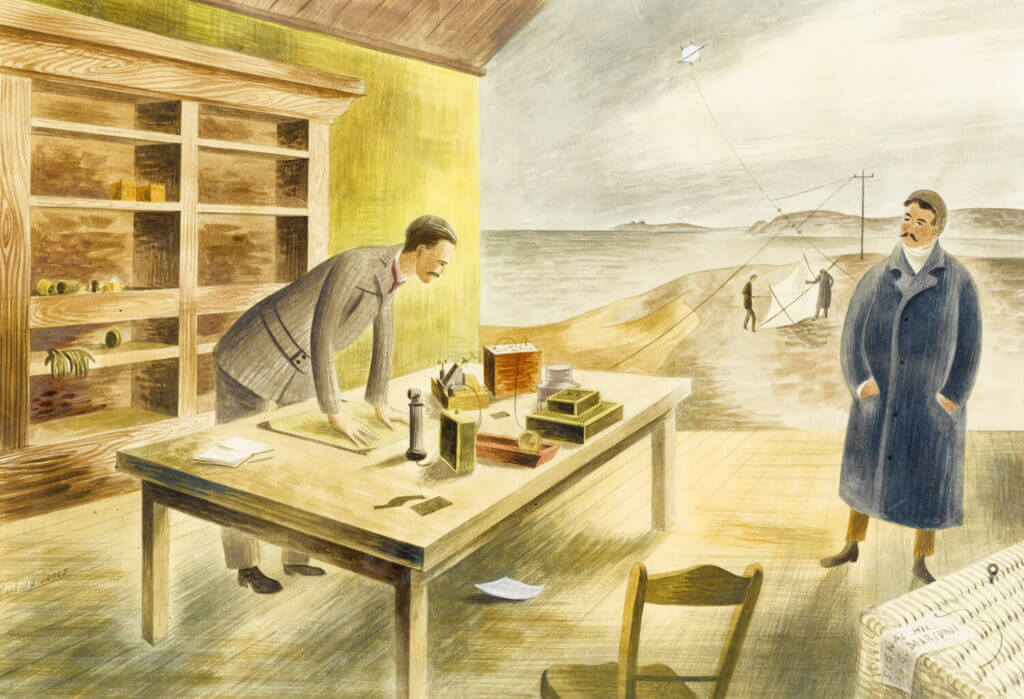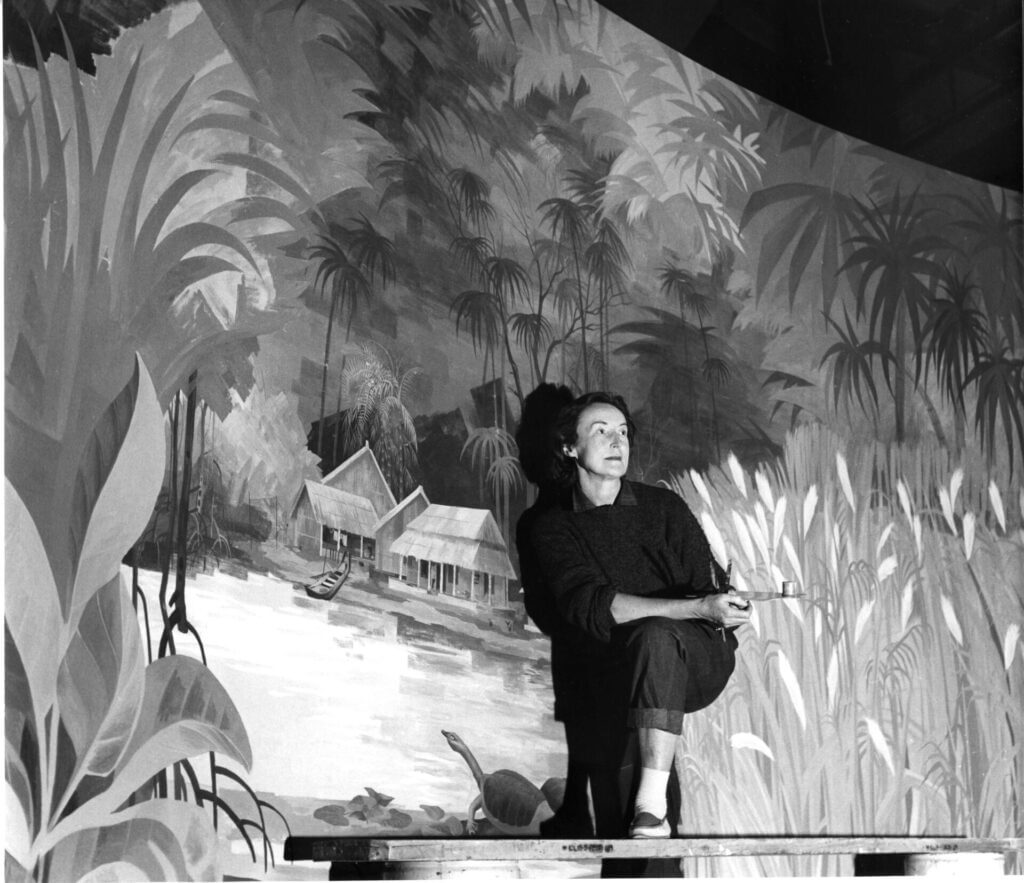Marconi Transmitting the First Radio Signals from Cornwall to Newfoundland, 1901, 1950
Your currently viewing RAW Modern | Switch to RAW Contemporary
Marconi Transmitting the First Radio Signals from Cornwall to Newfoundland, 1901, 1950
Catalogue essay by Blanche Llewellyn
“Marconi Transmitting the First Radio Signals from Cornwall to Newfoundland” depicts Guglio Marconi, the 1st Marquis of Marconi, on December 12, 1901 confirming the reception of the first transatlantic radio signals – hearing Morse code for the letter “S” transmitted from Cornwall.
It is one of 12 watercolours commissioned in 1950 by the Financial Times for a calendar titled ‘A Half Century of Progress’.
Jones had a particular love for the medium of watercolour, particularly admiring its translucent qualities, brilliance and its ability to evoke, rather than describe, a sense of place and time. In her book, Water-Colour Painting, A Practical Guide (1960), Jones didn’t just focus on imparting technical skills; she also aimed to captivate readers with the sheer delight of the medium: “One day when you come in … you will pour out a drink, light a cigarette, and sink into a chair, having painted a picture. Nothing in the world is like this sensation, peace and elation, God on the seventh day”.
By the time she was commissioned for this project, Jones had already established a solid reputation. She was widely admired and notably prolific, having contributed significantly to the Recording Britain project. This initiative, the brainchild of Kenneth Clark, which entailed the creation of over 1500 watercolours and drawings, aimed to document British life and landscapes during the Second World War.

